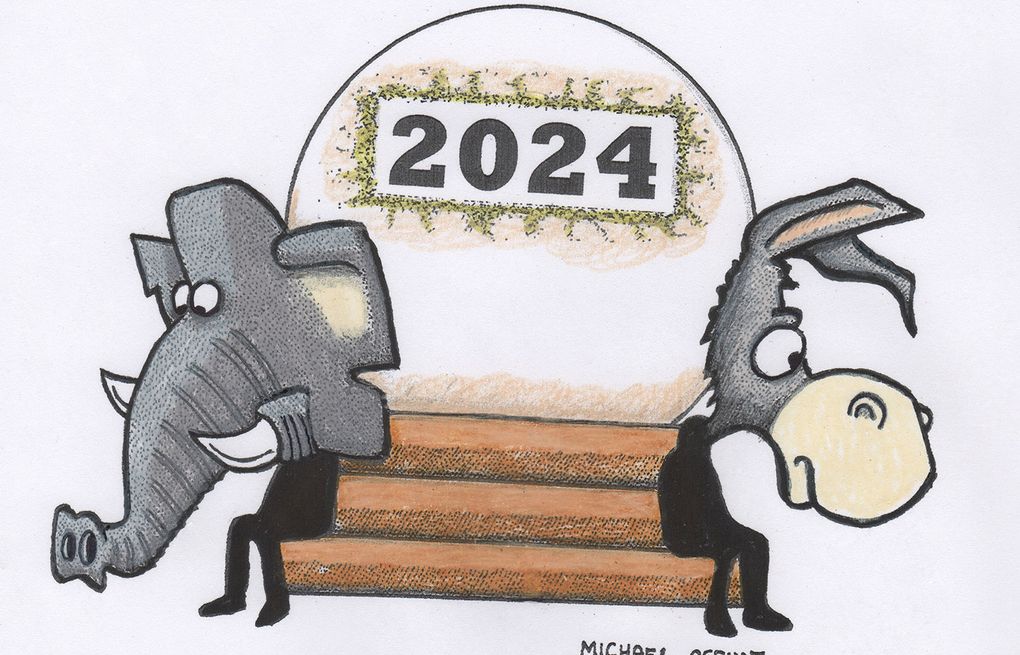The US Economy Has Resilience and Risk
(Taiwan) on 22 February 2024
by Jeff Lin (link to original)
Keynesian theory explains the driving forces of economic growth, beginning with demand. The four drivers of growth are consumption, investment, government spending and net exports. A close examination of the first two reveals that the annual growth rate of private consumption, which accounts for as much as 70% of consumption, fell from 2.5% to 2.2%. Still, private consumption is key to supporting a strong U.S. economy. Critically, among personal consumption, the annual growth rate of durables grew from 0.3% to 4.3%, and service consumption growth remained at 2.3%.
On the other hand, fixed investment, which probably accounts for 20%, fell from 1.3% to 0.5%; however, the annual growth rate of factory investment grew from -2.1% to 12.7%. Investment in equipment fell from 11% to 6.9%, while investment in intellectual property fell from 9.1% to 4.3%. Although these annual growth rates have slowed, they have resulted in a pattern of stable growth.
The U.S. economy has several defining characteristics. First, the resilience of employment demand will continue to support stable economic growth. The rapid recovery of the service industry after the pandemic led to a surge in demand for labor, weakening the impact of interest rate hikes. Workers have a strong ability to negotiate wages. For example, this January, the annual growth rate of wages reached 4.5%, exceeding pre-pandemic levels and supporting the recovery of U.S. household consumption.
Second, the return of the manufacturing industry supports the composition of investment. Since 2022, the Biden administration successively passed the CHIPS and Science Act and the Inflation Reduction Act, attempting to speed up the localization of key industrial chains. American spending on manufacturing and construction has surged. The U.S. will continue to work with allies, encouraging advanced manufacturing companies to build factories in the U.S. through de-risking, which will also help promote the manufacturing industry’s recovery.
Third, the price of assets has surged, fueling the wealth effect. After the pandemic, the large fiscal stimuli and monetization of financial deficit increased stock and real estate prices. In 2023, the Nasdaq index rose 43.4% and the Dow Jones Industrial Average rose 13.8%. American real estate prices have continued to reach new highs. Since the beginning of 2020, the S&P CoreLogic Case-Shiller Home Price Index has risen by more than 45%. The rise in asset prices has helped improve household balance sheets and will provide some support for future consumption.
Still, the U.S. economy faces many risks. First, the high interest on mortgage rates is suppressing the recovery of housing demand. Mortgage rates in the U.S. have doubled since the beginning of 2022. With such high interest rates, first-time home buying and house replacement must be put off for ordinary people. The National Association of Realtors reported that in 2023, only 4.09 million second-hand houses were sold, the lowest amount since 1995. At the same time, market supply is facing shortages. The number of available second-hand houses dropped from 1.74 million in 2019 to 1.06 million in 2023. As buyers compete for homes, the market has sunk into a situation where fewer houses sell for higher prices.
Second, fiscal subsidies have ended, which will cause the U.S. economy to lose some momentum. After the COVID-19 pandemic, the U.S. government transferred a large amount of financial assistance to households, enabling Americans to build up excess reserves. These savings reduced the effects of monetary tightening in 2023 and supported resilience in household consumption. However, as fiscal subsidies have continued to decrease, support for consumers from excess savings will continue to weaken in 2024. According to the U.S. Bureau of Economic Analysis, the amount of “employee compensation” within the household income is 62%, the same level as in 2019.
Finally, the problem of financial inequality in the U.S. is increasing daily. Currently, 70% of wealth is concentrated among the top 20% of households. The average income of the top 10% is nine times that of the remaining 90% of the population, while the average income of the even richer top 1% is 39 times more. The average income of the wealthiest top 0.1% can exceed 196 times that of 90% of the population. Four rounds of quantitative easing policies after the 2008 financial crisis and the COVID-19 pandemic have only exacerbated this phenomenon. U.S. national debt has reached $34 trillion. Trying to use fiscal policies to help the poor is attempting the impossible.
The author is the chief economist at CTBC Bank and a chair professor at the CTBC Business School.


